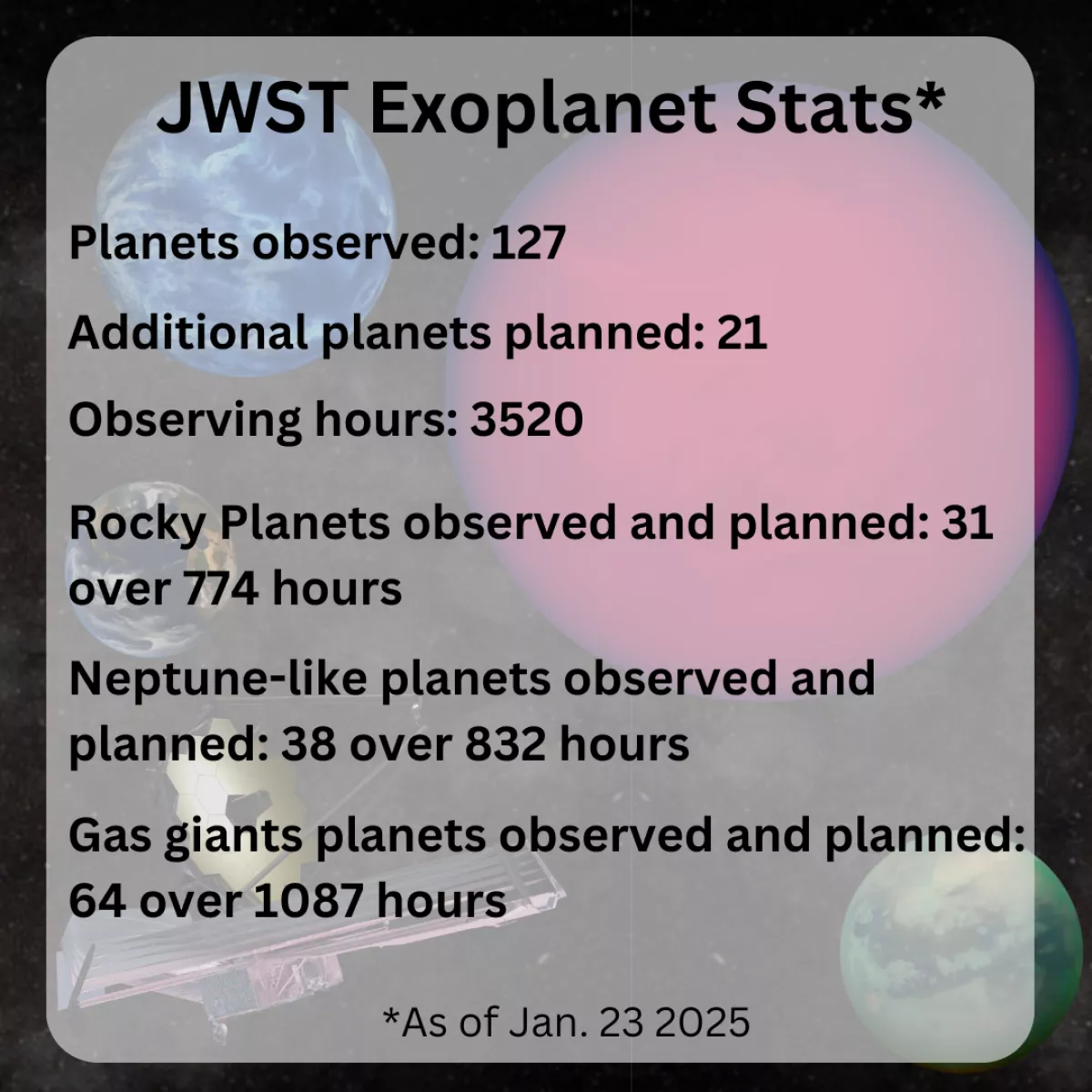Data on alien worlds gathered over 3 years now available online
Since its launch in December 2021, the James Webb Space Telescope (JWST) has revolutionized astronomy, offering insights into both the early universe and the atmospheric characteristics of distant exoplanets. Although initially designed to study ancient galaxies, JWST's unexpected prowess in exoplanet research has been a major scientific breakthrough and a newly created online platform now offers 3 years of gathered data on alien worlds to the public.
Joshua Lothringer, an astronomer at the Space Telescope Science Institute based in the US city of Baltimore, has created a data dashboard showcasing JWST's exoplanet observations. As an article by the Space publication points out, this resource connects data from NASA's Exoplanet Archive and existing research.
It offers visualizations of the 111 exoplanets studied so far and 17 more scheduled for observation. These include 113 transiting planets—those crossing their star's face from Earth's perspective—enabling JWST to analyze their atmospheres by examining starlight filtered through them. Among these, 64 are gas giants like Jupiter, 30 resemble Uranus or Neptune, and 19 are rocky terrestrial planets. An additional 15 gas giants have been directly imaged due to their wide orbits.
JWST excels at studying exoplanets due to its large 6.4-meter mirror, which collects vast amounts of light to observe faint objects and resolve close-proximity details. Moreover, its ability to observe in infrared wavelengths allows it to detect critical molecules like carbon dioxide and methane, inaccessible to previous telescopes like Hubble. These advantages have enabled scientists to explore the composition, temperature, and weather patterns of exoplanet atmospheres across various planet types.

Lothringer highlights the telescope's contributions to understanding not only exoplanet atmospheres but also planetary interiors and dynamic processes like tidal heating and photochemistry. While giant planets, often extremely hot with temperatures reaching over 4,230°C, are JWST's primary focus due to their size and brightness, these studies also provide insights into planetary system formation and behavior, including our own solar system's history.
"So far, we’ve been focused on planet-by-planet studies, but we’ve started to build up a large enough sample of planets that we’re just beginning to make some generalizations that will inform us on how these planets behave as a whole," Lothringer stated. "Folks can follow along with the dashboard, which will be updated as new observations are planned and taken."
One of JWST's standout achievements was the Early Release Science program’s observation of WASP-39b, a Saturn-sized exoplanet located 750 light-years away. By using all of JWST’s instruments, researchers validated the telescope’s capabilities while uncovering unexpected findings, such as photochemically produced sulfur dioxide, alongside expected elements like water and carbon dioxide. This groundbreaking data offered unprecedented insights into exoplanetary atmospheres.
Despite its primary goal of galaxy science, JWST's versatility has allowed researchers to explore a broader range of scientific questions, fundamentally reshaping our understanding of exoplanets. The combination of JWST's engineering innovations and new observational techniques has enabled a paradigm shift in planetary science, revealing details about atmospheric chemistry, weather, and interior dynamics that were previously unattainable.
The JWST’s ongoing exoplanet research is accessible via Lothringer’s dashboard, which is regularly updated with new observations. This allows both scientists and the public to follow along as the telescope continues to uncover the secrets of distant worlds, solidifying its role as a transformative tool in modern astronomy.
By Nazrin Sadigova








